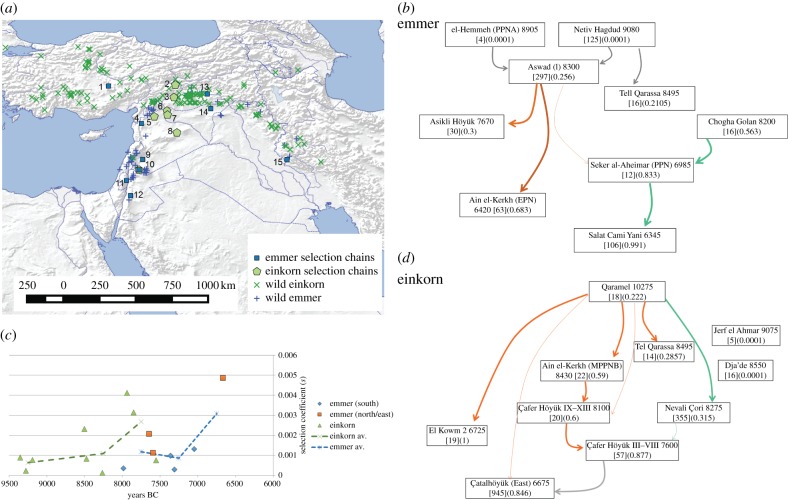Figure 4.
The evidence for the evolution of non-shattering in wheats. (a) Map of evidence for wheat domestication, indicating the distribution of wild Triticum dicoccoides [34], wild Triticum boeticum [35], and archaeological sites with spikelet base remains; sites numbered: 1. Çatalhöyük, 2. Çafer Höyük, 3. Nevali Çori, 4. Ain el-Kherkh, 5. Qaramel, 6. Dja'de, 7. Jerf el Ahmar, 8. El Kowm 2, 9. Aswad, 10. Tell Qarassa, 11. Netiv Hagdud, 12. el-Hemmeh, 13. Salat Cami Yani, 14. Seker al-Aheimar, 15. Chogha Golan. (b) Selection chains for emmer and einkorn wheat, negative selection shown in grey in the case of einkorn. (c) Estimated selection coefficients (s) for emmer and einkorn wheats, showing averages in 500-year bins. (d) Selection chains for einkorn wheat. In (b) and (d), boxes indicate site name, median age, sample size and proportion of non-shattering form.

